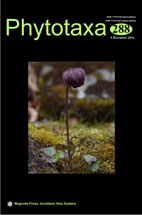Abstract
Oak pollen has great potential to be used in reconstructing paleovegetation and paleoclimate. Pollen grains from Holocene sediments of Rolla, Missouri, USA were studied. The goal of this study was to evaluate the morphology of dispersed oak pollen using light and electron microscopy. Three types of oak pollen were recognized: Group 1, Group 2, and Group 3. They occurred in the sample in the following approximate percentage: 52, 32 and 16% respectively. Pollen of Group 1 corresponds to that of white oaks, pollen of Group 2 to that of red oaks. Pollen of Group 3 differs from oak pollen known for the studied region. While electron microscopy shows a good prospect for a detailed interpretation of dispersed oak pollen, many factors should be taken into account when assessing past vegetation: the paleo-forest density, location of sampling, apparent wind direction during pollination, and the “resolving ability” of pollen morphology for different oak species. The intensity of flowering and direction of the pollen transport can significantly influence the quantity of pollen of a particular species in the spectrum. The possibility of medium or long-distance transport of a small quantity of oak pollen from other regions should also be considered in the interpretations of fossil spectra.

